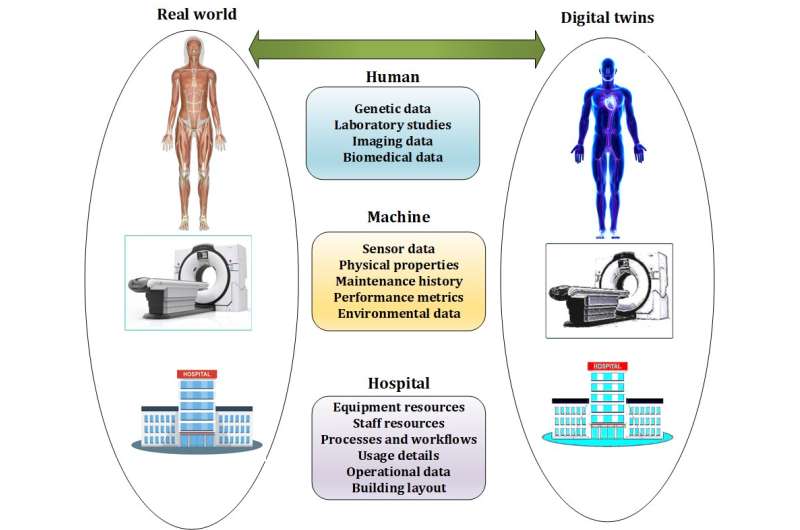Integrating digital twins and deep learning for medical image analysis in the era of COVID-19

Digital twins are virtual representations of devices and processes that capture the physical properties of the environment and operational algorithms/techniques in the context of medical devices and technologies. Digital twins may allow health care organizations to determine methods of improving medical processes, enhancing patient experience, lowering operating expenses, and extending the value of care.
During the present COVID-19 pandemic, various medical devices, such as X-rays and CT scan machines and processes, are constantly being used to collect and analyze medical images. When collecting and processing an extensive volume of data in the form of images, machines and processes sometimes suffer from system failures, creating critical issues for hospitals and patients.
To address this, a study published in Virtual Reality & Intelligent Hardware introduces a digital-twin-based smart health care system integrated with medical devices to collect information regarding the current health condition, configuration, and maintenance history of the device/machine/system. Furthermore, medical images, that is, X-rays, are analyzed by using a deep-learning model to detect the infection of COVID-19.
The designed system is based on the cascade recurrent convolution neural network (RCNN) architecture. In this architecture, the detector stages are deeper and more sequentially selective against small and close false positives. This architecture is a multi-stage extension of the RCNN model and sequentially trained using the output of one stage for training the other. At each stage, the bounding boxes are adjusted to locate a suitable value of the nearest false positives during the training of the different stages. In this manner, the arrangement of detectors is adjusted to increase the intersection over union, overcoming the problem of overfitting. This study trains the model by using X-ray images as the model was previously trained on another dataset.
The developed system achieves good accuracy during the detection phase of COVID-19. The experimental outcomes reveal the efficiency of the detection architecture, which yields a mean average precision rate of 0.94.
More information: Imran Ahmed et al, Integrating Digital Twins and Deep Learning for Medical Image Analysis in the era of COVID-19, Virtual Reality & Intelligent Hardware (2022). DOI: 10.1016/j.vrih.2022.03.002



















